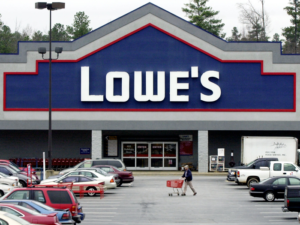
“Lean product development is a process that aims to get products to customers quickly and with less waste. It is an important part of the lean philosophy, an approach to business that focuses on customer value, efficiency and flow.”
Lean product development is a process that focuses on the customer to create innovative, quality products. It is in stark contrast to traditional production methods, which focus heavily on up-front design and engineering. Lean product development aims to reduce waste by focusing on what customers want rather than what they think they want. The goal of lean product development is for companies to release better products faster while reducing costs along the way. So without any further ado, let’s get to know what lean product development entails!
Jump Ahead To :
Lean Product Development Explained
Lean Product Development is an iterative process for developing products. Lean begins with a vision and is focused on delivering that value in a fast and efficient way. It starts by identifying what you want to build, why it’s valuable, who will care about it, how they’ll see its value and when they need to have the benefits delivered to them. To create this quickly, there must be open communication between all stakeholders throughout the company, from business units to production staff. Every step along the journey can add waste if not done correctly or efficiently, so lean emphasises getting feedback early and often from customers, which leads to our next topic, lean product development.
Lean Product Development is making lean manufacturing and lean startup and applying it to hardware products, software applications and even services. Lean Product Development focuses on getting valuable feedback from customers early in your projects life cycle to adjust or pivot as needed throughout this iterative process, which leads to our next section, lean startups.
Let’s look at lean production models again. We know that every step along the way adds some waste, whether it’s inventory, time spent moving parts between steps or waiting for a machine to get back up after failure etc. So when developing new hardware products, there are also many places where delays can be added if not done correctly, leading to increased costs instead of the decreased cost associated with lean principles in lean startups.
Iterate: In lean product development, you want to develop quickly, but only with the features that are truly valuable for your users, so this means ongoing refinement through research, prototyping, or just asking them directly for input along the lean product development journey, which also includes lean software development!
Learn: When developing any new hardware products, there will inevitably be failures during testing phases leading up until mass production begins. So lean emphasises getting quick data points after each iteration to ensure problems can be addressed as lean software development.
Pivot: Lean advocates using lean product development to pivot or change direction based on what you learn throughout the lean startup process, which is the next topic of discussion!
Lean startups are a sub-field within lean product development that focuses specifically on new ventures where finding early adopters is key for survival and growth. These can be businesses starting with lean principles in mind from the beginning, but they also apply to non-profits, research projects etc. The goal here is always to develop something valuable quickly through iterations so customers will adopt it, leading to your final section, lean life cycle management (PLM).
Many companies now have some lean strategy as part of their overall business plan. Whether it’s just having lean principles in mind while working on lean startup projects or having a dedicated lean product development team, lean life cycle management is an extremely valuable tool for any company to have at their disposal.
Lean Product Development utilises lean life cycle management since it’s all about delivering value from customers early and quickly through iterations learning along the way, so whole teams must be communicating throughout the lean software development process, which can bring tremendous benefits if done correctly!
What Are Lean Products?

Lean products are also referred to as minimum viable products (MVPs). What this means is that you take an idea and make the smallest possible version of it. This helps reduce risk because if your product isn’t successful in its simplest form, there’s no point wasting time trying to perfect it – go back to step one! So lean thinking is all about getting ideas out into the market quickly to be tested with real users. If something doesn’t work, find another solution or pivot on what worked until a more sustainable model emerges.
Companies like Amazon & Google have used lean principles for years, so why not apply these same techniques within your own business? You will need a good idea, some creativity, and, most importantly, an understanding of lean thinking.
Lean Product Vs Lean Product Development
Lean production is a large part of lean philosophy that focuses on reducing non-value-added activities or wasted time and effort to increase productivity. Lean product development takes this concept one step further by focusing on reducing waste created whenever new products are designed, developed, built and brought to market. The goal for Lean Product Development is to eliminate anything unnecessary from the process so as not to slow down rates of innovation or make it difficult for organisations to meet growing customer demand quickly enough.
Lean production is an approach to manufacturing that emphasises waste reduction by reducing the number of non-value added activities in a manufacturing process, optimising value stream mapping and focusing on continuous improvement practices. Lean Product development focuses less on lean principles for product design than using them as tools during the development process. The goal of Lean Product Development would be to optimise both times, cost and quality while still meeting customer needs.
Lean product development uses many lean production techniques and adds its unique style, which will focus more on how teams work together every day through all stages of a product life cycle. It has been shown that Lean Product Dev., “incorporating cross-functional collaboration with customers at various points within the design-to-launch process,” has led to reducing the time it takes for new products to hit store shelves. Lean production focuses on creating great value through its processes, Lean Product Dev. instead, it looks at how teams work together throughout a product’s life and can use Lean Production as one method in their tool belt towards success.
Lean Product Dev. and Lean Production both use the same core values. Still, Lean Product Development can be seen as a natural evolution of lean production to increase efficiency in today’s fast-changing business world.
It is important for companies considering Lean Product development or those that have already started down this path to know what they are trying to accomplish before starting on their journey towards success. It may help to see where other product developing organisations have succeeded and failed so chosen teams will not fall into similar traps when creating new products. This way, you will learn from others’ mistakes while still building upon your organisation’s knowledge base, which could lead you further than expected throughout any project life cycle and beyond the launch date of a new product rollout.
Lean Product Development is a great way to develop new products quickly while still maintaining the quality and customer satisfaction that your customers have come to expect from you.
Principles Of Lean Product Development

– Developing the product only when you know it is useful and needed. It means, developing a new product should not be done because we want to develop something or other times. The need should come first. The lean approach says that for each requirement, we should ask ourselves whether this functionality can create value for customers and us (the business). If yes, then implement it in software; if no, don’t do it.
Try to avoid features that are nice to have but does not deliver any real value over existing solution/competitor’s products or services unless those features provide some differentiation and competitive advantage for your company and customers will appreciate them. Remember ‘more’ is not always ‘better.
avoid unnecessary processes
The lean approach says no process is good if it does not add value to your business or customer somehow, so try to get rid of them. We should concentrate on the most important things and do those things well without wasting time on unimportant stuff.
Create a Minimum Viable Product (MVP) that will provide just enough functionality for customers to see how this product can be useful for them and decide whether they want/need a more advanced feature set at all. The lean approach suggests that we quickly release early versions with basic features, listen carefully to what customers think about our products, gather, process, and learn from their feedback.
automate everything
The lean approach says that we should avoid doing anything manually if there is a way to automate it in software or other automated solutions (for example, scripts). It will save time for us, so do not hesitate to apply automation where possible!
The Principles of lean product development are simple but require courage and willingness to change the current traditional waterfall model into agile cross-functional teams with strong leadership skills who can make the right decisions quickly on making changes/additions in requirements based upon real user feedback. Lean principles may be viewed as opposite to Waterfall principles which recommend a sequential design life cycle focusing more on “what” functionality needs to be implemented rather than “why” and “when”.
Benefits Of Lean Product Development
One of the major benefits of lean product development is that it helps companies manage their resources more efficiently.
Lean manufacturing and new market entrants have created a competitive landscape where many producers cannot simply compete on cost alone. This has made efficiency all the more important, as it allows for increased profits while still keeping prices low.
Lean product development ensures that people can accomplish more with fewer resources – allowing them to create products without overspending money or wasting time on unneeded steps between design and creation stages. Additionally, industry experts such as McKinsey & Company suggest high levels of productivity within an organisation are linked to higher rates of profitability, which is another reason why adopting lean principles can be beneficial for organisations looking to increase their bottom line.
Another benefit of lean product development is that it helps organisations solve problems more efficiently. This process usually begins with the organisation brainstorming ideas, broken down into smaller components to begin working on individually. While each team member will have a specific role within the project, there’s also an overarching goal to work towards collectively – making this one of lean’s most prominent benefits for companies looking to innovate and grow their business in today’s competitive market.
One final benefit associated with adopting lean principles comes from actually completing projects faster than those who don’t use these methodologies at all or as effectively. The average amount of time required by teams adhering to traditional methods was about 109 days; however, those following Lean principles could complete the same projects in just 51 days. This can profoundly impact companies, especially if they’re producing many different products every year – which is often the case for larger organisations.
In short, lean product development helps managers and employees accomplish more with less time spent not working on their goals. It also allows businesses to solve problems more efficiently than those who don’t use these principles at all or as effectively; this usually makes them produce better work faster than most of their competitors, allowing them to stay ahead of the game.
Final Words
Many people have heard of Lean Product Development, but they may not know what it is or how to use this methodology for their projects. The most important aspect of Lean Product Development is that it’s an iterative process and starts with a vision (just like any good project). After the initial idea has been identified and validated, the next step in Lean development is to identify what you want to build, why it’s valuable, who will care about it, how they’ll see its value and when they need to have the benefits delivered. This also means identifying which risks can’t be eliminated throughout the product life cycle






